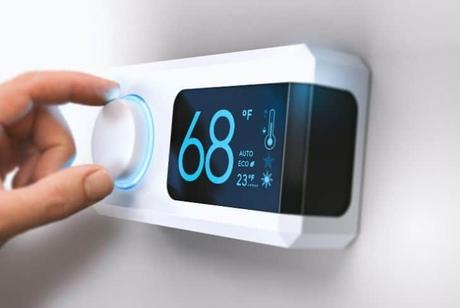Every building gets to a point where it requires renovation or repairs. Some do it to make a sale from the premises, others do it for it to look more beautiful or give it a new feel, and others do it for cultural or seasonal celebration reasons among many others. No matter the reason, you have to look for eco-friendly ways to renovate your house to not only be part of the green environment movement but also to preserve our planet earth from various types of avoidable pollution.
Here are at least 17 eco-friendly ways to renovate your home.
1. Repair the Floor Using Reclaimed or Renewable Wood

The floor is one of those areas where renovations really beautify the home. Eco-friendly options are also being used in significant numbers today. Reclaimed wooden boards, for instance, are preferred because they do not warp once they are installed if installed correctly. Scaffold boards are easy to source and work really well on floors as well as on the walls.
Another alternative is cork, which is a renewable material and can be harvested from the same tree for hundreds of years. Every harvested cork tree fixates between three to five times more carbon. It has excellent thermal and acoustic properties, is soft and springy.
Additionally, cork is waterproof and wipeable. Another alternative is bamboo and it is preferred because it is durable, is moisture-resistant, grows back faster than wood and does not require pesticides while growing.
2. Use VOC-free Paint

Volatile organic compounds (VOCs) produce harmful molecules, making the people incur long-term health effects. VOC paints contain chemical ingredients that evaporate into the atmosphere as the paint is drying.
Switching to VOC-free paint, or paint with low VOC levels, will be a safer option for the environment, the home and its occupants as they will be able to breathe easier. It is highly recommended especially if you are painting a child’s room or nursery.
3. Use Chemical-free Products
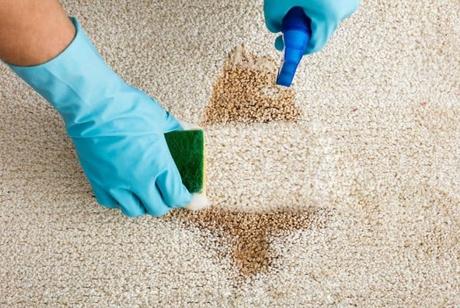
Chemicals are all over in the construction business. We use them when washing brushes, removing overspill, and formaldehyde is present in building materials and other household products.
White spirit, wallpaper stripper and heavy duct brick cleaners are harmful to the skin and should be done away with. Switch to alternatives that do not harm the skin, as well as products free from formaldehyde for the sake of your health and that of the environment.
4. Switch to Green Energy

Green energy can be generated from home in several ways. For instance, you could install wind turbines that generate electricity, or just install solar panels for the same purpose. The sun is ever-present and is a powerful and renewable source of green energy.
Harvest it using solar panels and do away with grid electricity. In doing so, you will be saving energy, helping the environment and saving some money that would otherwise have gone to pay for electricity bills. There are several panels, with some being available from as low as $200.
5. Donate Your Unwanted Items

This has a lot to do with renovating the home, despite it not seeming as so. Stocking the home with unwanted items will give you the sense that your house is full or is small, making you want to buy a bigger house or build another one. Give away those unwanted items or those that are no longer in use to goodwill, and you will be of help to another human being.
Giving away such stuff will make your house more spacious and will allow you to renovate it as it should instead of opting for virgin materials to build a new home.
6. Install Low-flow Devices

About 27% of household water is used in toilets. Some toilets actually guzzle more than 13 liters of water, per flush. We, therefore, need to switch to low-flow plumbing systems that are water efficient. Your shower, toilet and sink faucets need to be swapped with low-flow devices, to save water.
Additionally, consider a dual-flush system, where one button can be pressed and flush liquid waste with the other flushing solid waste. A dual-flush system is available all over the markets, with some costing as little as $15. In addition to low-flowing toilets, add flow governors to the shower and sinks, to help you minimize on your water usage, and help recycle as much water as possible.
7. Install High-quality Insulation
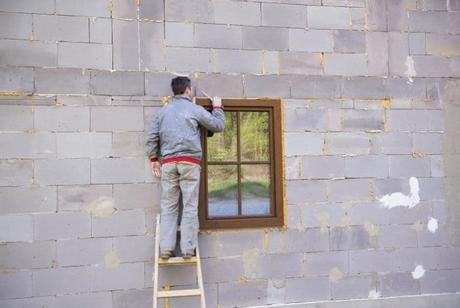
You need to choose high-quality insulation, to better protect yourself from the elements. Poor insulation might not affect you during the warm summer months, but come winter, it will cost you mightily. A good roof’s insulation will ensure you save some money on energy and will also help you reduce your carbon footprints.
By using high-quality insulation and plasterboard, you will be helping your home stay warmer during the winter and cooler in the summer, all while reducing your bills and environmental impact.
8. Choose Energy-efficient Appliances
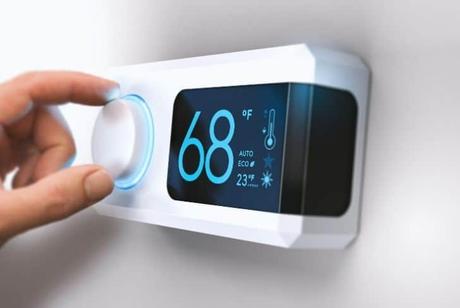
For an eco-friendly home, consider energy-efficient appliances. Look for eco-friendly dishwashers, freezers, refrigerators, ovens and washing machines, as they will consume less energy and will fit your budget. Also, consider LED lighting as artificial lighting accounts for about 15% of the average domestic energy bills.
Incandescent bulbs only convert 10% of electrical energy into light and waste the rest as heat. LED lighting requires a lot less power and is the more sustainable source of artificial lighting. Some can actually last for up to 22 years.
9. You Should Develop a Habit of Using Reclaimed Materials
Reclaimed materials, like wood and steel for construction, windows, and furniture is an environmentally-friendly choice. It saves on time, energy, money and trees as well. It will also lower the number of harmful chemicals in the lumber industry that will be used.
Reclaimed wood and discarded metals can be fitted in a way that the home gets a unique and contemporary look. Rather than throwing away the old bricks, reclaim and reuse them
10. Consider Recycled Glass
There is a myriad of stores and home depots that are selling bio-glass. It is a form of glass that looks like new windows and is completely environmentally friendly.
They can be a fantastic addition to the kitchen and bedroom, as they bring in a new level of brightness into the room, allowing for more natural lighting and the morning sunshine, at the same time saving you some lighting bills.
11. Reface Rather Than Replace

A home can be renovated and given a brand-new look without actually being destroyed or undergoing the wastage of materials. Refacing gives the home a new look, provides it with distinctive quality and will also save you money.
Refacing and repurposing items and materials prevents unnecessary purchases for your home upgrades. It also saves on the natural resources and reduces the emissions from the manufacturing and transportation of these materials, doing the environment a huge favor.
Despite the need to reface rather than replace, you definitely have to replace your old appliances and use the newer and more energy-efficient alternatives.
12. Deconstruct Rather Than Demolish
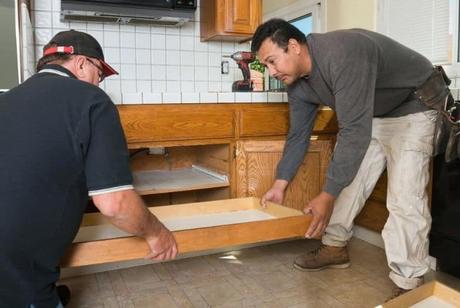
You might want to take a walk around the home first, see what you can salvage and re-use beforehand. It is an eco-friendly way of saving money and resources while renovating the home. Some of the things you could salvage include flooring, cabinets, doors, tiles, bricks, molding and light fixtures.
Rather than throwing away an item, consider using it in another room. Demolishing without salvaging these items will force you to buy new ones, which is not cheap and not eco-friendly. Moreover, demolition has an immense impact on the environment, mainly because of the wastage of materials.
13. Work on the Ventilation
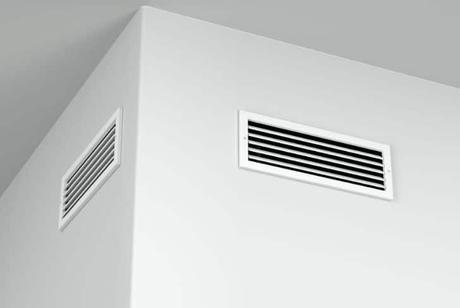
Some houses have been built in a high radon area. Radon has been proven to be a cause of cancer, meaning if you live in such an area, rule out below-grade living space in your planning.
Also, install a special radon-venting system in your basement. Additionally, ensure there is adequate natural ventilation, as opposed to using the mechanical systems that aerate the home, regardless of where the home is located. It is best to renovate the house in such a way that there are windows on at least two walls in the main rooms.
14. Consider a Renewable Heating System

Most houses require additional heating, especially during the cold seasons, in which case they turn to electricity for the same. However, consider a natural approach to heating the home. For instance, ground-source heat pumps use buried pipes to extract heat from the earth for heating the home and the water circuits.
It would, therefore, require you to dig up your garden and install the system. For the air-source systems, they similarly heat the home, but instead, extract heat from the air. They are fitted on an external wall or in roof space, making them ideal for retrofits.
Wood-fuelled heating systems use the heat from burning pellets or logs to warm a room. They cost a couple thousand in dollars but are a worthy and eco-friendly alternative to electricity.
15. Eco-friendly Exteriors Such as Green Roofs are Great Options!
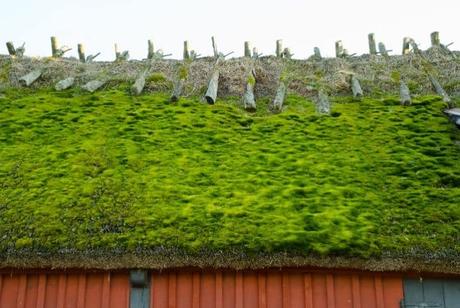
You can decide to paint the home using eco-friendly paint, like those that are water-soluble or use plant oils and resins. You could also have a green roof, where the roof of the home is partly or wholly covered with vegetation.
Green roofs maximize on the space available and help attain environmental sustainability. They are very easy to install and maintain and can be installed on small garages, living quarters, or any other building.
Moreover, green roofs can be installed on both new and renovated houses. They can also survive amongst other installations, such as solar panels, and other space left out for recreation or other purposes.
If a green roof is not an option, avoid using asphalt tiles and instead use materials such as metal and ceramic, which have more of a cooling effect on the home. A roof with black roofing or tiles will also get hotter during warm months.
16. Recycling is Key
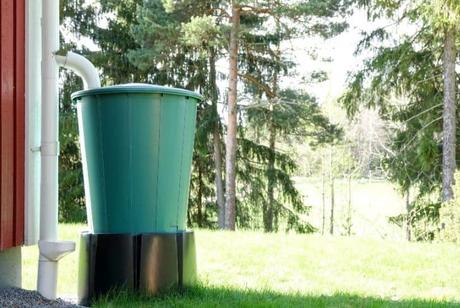
For an eco-friendly home, recycling is key. We have already talked about reclaiming buildings and household material, and they are an eco-friendly way to go. Additionally, recycle water and make an extra sustainable decision for the home. Collect the water that comes in the form of rainfall, and use it to flush toilets, filling washing machines or watering plants.
Use a rainwater harvesting system that collects water through a drainpipe, can filter out leaves and debris, and store the water in a tank. In addition to the low-flow devices discussed above, you will be saving yourself a lot of water, in terms of bills and in storage tanks.
17. Work on Installing Water Filters in the Kitchen
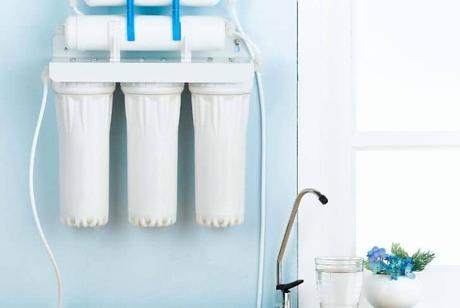
When renovating the kitchen, install a water filter and eliminate the need to continuously rely on disposable plastic water bottles. This saves you money and benefits the environment.
Also, place windows where there is the most natural light, making you rely less on electricity, and providing you with a lot of natural shining light and natural warmth. In addition, keep the refrigerator in a cool spot, ideally away from the windows, the oven or other sources of heat. This helps maximize the potential of the refrigerator and keep your energy bills down.
References:
Bergman, L. (2019). 5 Ways to Limit the Environmental Impact of Your Home Remodel. Biofriendly Planet. Retrieved from https://biofriendlyplanet.com/green-ideas/environmentally-friendly/5-ways-to-limit-the-environmental-impact-of-your-home-remodel/
Build It. (2019). 10 Steps to a Green Home Renovation. Build It. Retrieved from https://www.self-build.co.uk/10-steps-green-home/
Clark, E. (2017). Top 10 Eco-Friendly Ways to Renovate Your Home. Eco Warrior Princess. Retrieved from https://ecowarriorprincess.net/2017/02/top-10-eco-friendly-ways-renovate-home/
“Eco-Friendly Remodeling”. (n.d.). Better Homes & Gardens. Retrieved from https://www.bhg.com/home-improvement/green-living/eco-friendly/eco-friendly-remodeling/
“Eco-Friendly Ways to Do a Complete Home Renovation”. (2019). Bidvine. Retrieved from https://www.bidvine.com/blog/eco-friendly-home-renovation/
Fi & Isobel. (2019). 10 ways to reduce the eco-footprint of your home renovation. Fifi McGee. Retrieved from https://fifimcgee.co.uk/blog/eco-friendly-tips-for-your-house-renovation
Jessica. (2020). 10 Eco-Friendly Ways to Renovate your Home. Freshome. Retrieved from https://freshome.com/renovation/10-eco-friendly-ways-to-renovate-your-home/
